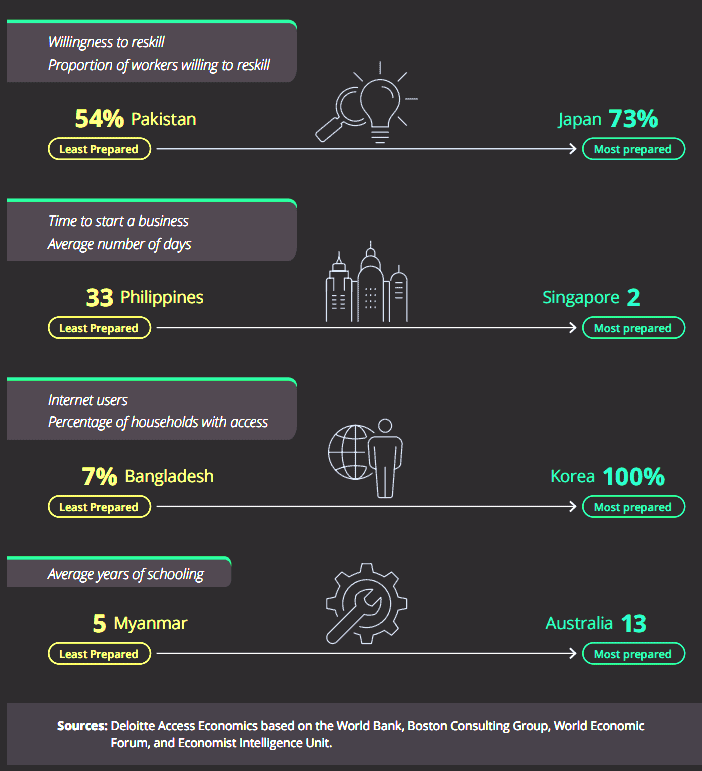According to the Deloitte report, The Future of Work is Now: Is APAC Ready, digital change and automation are driving enormous productivity gains in the world of work. However, the gains made because of automation come at a significant adjustment cost.
Often those costs are felt by workers who are least able to successfully transition to new roles.
“Automation creates opportunities for a better future of work, particularly in APAC where 60% of the global workforce resides. With automation, humans can offload jobs that are dangerous, dull or dirty, and focus on more productive and higher-value work,” said Haresh Khoobchandani, Vice President, Asia Pacific, Autodesk.

The report noted that in the Asia-Pacific region, India, Bangladesh, and Pakistan are the countries most at risk and least prepared for automation. On the other end of the spectrum is Singapore, ranking second for preparedness, behind Australia and ahead of Japan.
Singapore’s capacity to invest in education, assist at-risk workers, and support workers’ transition to new roles and industries, means the workforce is most ready to adopt evolving ways of work.
The COVID-19 factor
The arrival of COVID-19 has accelerated digital transformation and cast automation in a new light – an opportunity for workers to up-level their skills, work alongside automation, and subsequently take on high-value-adding tasks.
Singapore performs well in terms of resilience against the impact of automation on key sectors – construction, logistics and manufacturing.
“Even though COVID-19 has dealt a strong blow to labour-intensive industries such as construction, logistics and manufacturing, a sustained recovery is expected for Singapore as the country has long prioritized digitalisation and upskilling for its economy, enabling its workforce to deftly adapt to the disruptions,” Khoobchandani added.
Be proactive in addressing the risks of automation
Digital change and automation are driving enormous productivity gains in the world of work. The opportunity to usher in a new era of work is tremendous, but it is important that countries take proactive steps to mitigate the negative aspects of this shift. This includes raising the readiness of sectors that are highly at risk of automation, and supporting disadvantaged workers, such as individuals with lower education levels.
Having the right infrastructure and skills will mean that countries can create new roles, and transition workers into these roles with the adaptability and resilience required.
Recommendations
Raise awareness: Increasing awareness of the need to adapt, changing the narrative in these regions to focus on the opportunities created in terms of higher, value-add activities not the risk of job losses created by automation.
Fund projects: Fund industry-specific programs for digital transformation helping smaller businesses to access new, digital technologies to help accelerate automation usage and adoption.
Invest in education: Invest in learning programs to help disadvantaged workers and build resilience, promoting the uptake of reskilling or upskilling courses to help workers to continually reinvent themselves in an ever-evolving environment of disruption.
Conclusion:
Regardless of geography – that automation will create opportunity, if the right support mechanisms are put in place, and the focus is put squarely on helping workers to succeed.





